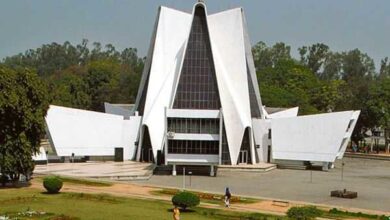Although thick fog is descending over Delhi, why isn’t winter this December as cold?
Even though December is nearly over, minimum temperatures are still a few degrees above average in several areas of Northwest India. The winters here are “mild,” compared to what they used to be at this time of year, despite the area being covered in a thick layer of fog.

beginning from Punjab, Uttar Pradesh, and extending up to the far north of Madhya Pradesh till December 31, the fog is predicted to get deeper beginning on Wednesday. In several areas of Punjab, visibility has decreased to zero meters at night, while in Delhi’s Indira Gandhi International Airport, it is less than fifty meters.
However, the nighttime lows throughout the northwest states are still 7–10°C, with Bihar, Jharkhand, Chhattisgarh, Vidarbha, and Odisha seeing higher-than-normal lows of 11–12°C. The India Meteorological Department (IMD) reports that minimum temperatures are at least 2-3°C above average in a number of regions of Punjab, Delhi, West Rajasthan, Uttar Pradesh, Bihar, Jharkhand, Gangetic West Bengal, Gujarat, and northeastern India.
On Wednesday, Delhi saw a degree over average low temperature of 7.8℃ and a high temperature of 22℃ throughout the day. This month, it has dropped as low as 4.9°C.
The effects are particularly noticeable in the north, where irregular precipitation and snowfall have upset weather patterns. “Compared to previous year, this winter has undoubtedly been milder. At this time of year, the temperature in Ladakh often drops to far below 16–17°C; so far, it has only reached -12°C. The director of the Met Center in Leh, Sonum Lotus, reports that the precipitation has been appallingly low, even less than it was last year.
The lack of significant western disturbances this month is responsible for the lack of cold weather, according to meteorologists. The majority of the wintertime precipitation in North India is caused by these extra-tropical storms, which have their origins in the western Mediterranean Sea and strike the western Himalayan area.
Greater than ever global warming
The most concerning aspect, however, is how annual weather patterns have begun to be dominated by global warming. It’s true that winter is ending longer than normal and becoming warmer than it did. It has been more sunny than typical in November and December, with no chilly days or waves as of yet.
across the years, there has been a progressive increase in the lowest temperatures across northwest India. This explains why the previous terrible winters and frigid waves have not occurred. However, these circumstances are also typical of El Niño years, in which the winters are often milder and the summer that follows is considerably hotter, according to M Rajeevan, a former secretary of the Ministry of Earth Sciences.
It does seem to be quite similar to a normal El Niño winter, which occurs between December and February when the equatorial Pacific Ocean’s sea surface temperatures rise above average and deliver milder weather to India. Scientists examining worldwide trends, however, caution that this year has also seen changes in these processes.
This year’s general warming has exceeded expectations significantly and has dominated all meteorological phenomena. Consequently, Professor Raghu Murtugudde of the Indian Institute of Technology (IIT), Bombay, said that the El Nino pattern and its effects on the weather in India have likewise been very unexpected and uncommon.
According to the globe Meteorological Organization (WMO), the globe is currently 1.1°C warmer than pre-industrial levels, and 2023 is getting closer to becoming the hottest year ever. The existing El Niño conditions are predicted to persist through the winter and weaken in April and June, according to the US-based NOAA.
WHEN IS THE WINTER “CHILL” APPROPRIATE?
For the majority of India, the IMD has already forecast above-average minimum temperatures between December and February of this year. Additionally, it had said that below-normal cold wave recurrence is anticipated.
According to the most recent prognosis, there won’t be any notable temperature changes until at least December 31. Instead, there will probably be a thick layer of fog. However, a new Western Disturbance on the evening of December 30 can remove the fog and drop the temperature even lower.
From December 31, 2023 to January 2, 2024, the system is predicted to produce light, sporadic rainfall to the J&K-Ladakh area and Himachal Pradesh, Uttarakhand. Because of the potential interaction between the western disturbances and lower level easterly winds, there may be activity in some areas of Uttar Pradesh, East Rajasthan, Madhya Pradesh, Chhattisgarh, and Vidarbha.







